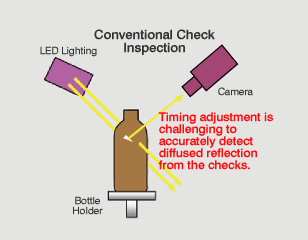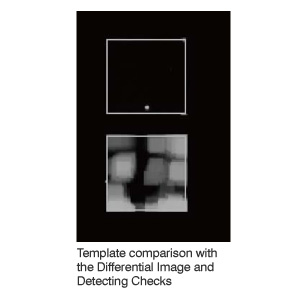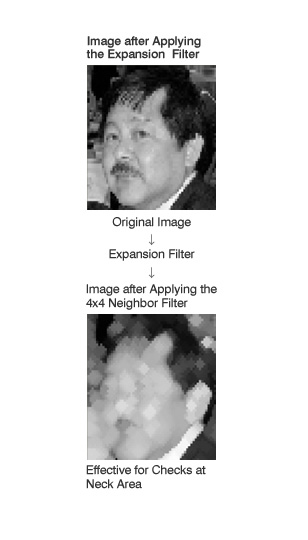Contents starts here.
Image Processing
Reproduce the Expert’s Technology.

Development and Technology Rivals the Expert’s Skill.
There is a reality that the performance of the inspection machine depends on the skill of the operator. That means the settings and the adjustment before the operation needs some skill. As a result, it relies on the skills of experienced operators.
Our challenge have been maintaining the machine’s performance of reproducing consistent inspection accuracy for whomever operates the machine.
For example, there is a defect called “check” that is specific to glass bottles. It is the internal crack caused by the local temperature differences of the bottle, which is a serious flaw related to the durability of the glass bottles. It is very tiny compared to cracks, but due to the high permeability of the material, it is not that difficult to detect.
In the past, these defects, i.e. checks, were detected using a sensor mechanism of both light emitter and receiver. However adjusting to synchronize the emitter and receiver required skilled operators. Keeping up with a stable inspection accuracy was a big hurdle.
Idea of Good Template Method and the Performance in High-Speed Imaging.
Due to in-house development of high-speed, high-performance, image-processing engines, we have specialized expertise with check-inspection cameras.
One of the initial challenges to overcome were variations on a single bottle, ranging from threaded portion, embossed patterns, and varying glass thickness.
Later we arrived on the inspired concept of using good sample products as the principal template. Then compare each product with that template to detect defects. This is called “the good template method,” comparing the differential image with the template, where pixels brighter than the template are considered to be a check.
In addition, the current inspection systems reached high imaging speed range at 1,000 frames per second.


Identifying the Check and the Vibration of the Machine to Prevent the False Reject
However, with the template method, one can also detect the differences caused by the vibration of the inspection machine, which increasing the false-reject rate when detecting good products. To eliminate the mechanical vibration we’ve added the expansion feature – a process that increases the pixels of the image – absorbing the effects of the mechanical vibration at the image processing stage.
Using these features, we are able to detect checks by rotating the bottles at an inspection rate of 300 bottles per minute, using multiple cameras on the unit.
Mounted cameras reduce the initial adjustment required at job changes to nearly one touch.
Our development capability provide a blueprint for the technology to be applied consistently for all check inspections.
Contents ends here.